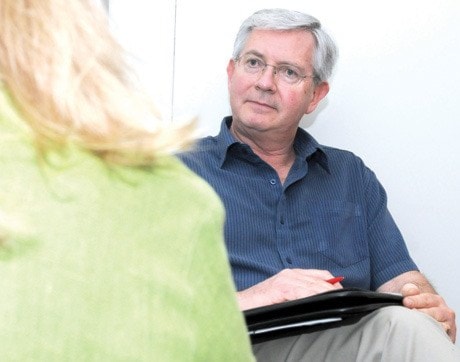One in four students visiting campus clinics struggling with mental health issues
In his first two years as a University of Victoria student, Jonathan Morris felt dislocated and disconnected.
“I remember feeling very, very sad,” he said.
He’d left his U.K. home in 2000 to to study child and youth care and struggled with the transition. But he went to a campus counsellor for help. “I felt supported. That was a safe place to go and talk.”
Morris completed his BA degree and went on to finish his Masters last year at UVic. Now he works with a consortium of B.C. universities and colleges and the Canadian Mental Health Association to co-ordinate a mental health and substance abuse counselling plan for students across the province.
It’s a timely project. A Canada-U.S. report released two weeks ago and published last month in the American Journal of Orthopsychiatry said one in four students who go to campus health clinics shows signs of clinical depression.
Researchers looked at 1,622 students at university clinics in B.C., Washington, and Wisconsin.
UVic has seen a steady increase in the severity of mental health issues in the student population, said Rita Knodel, UVic’s counselling services manager.
Of the 2,000 students the department’s 10 counsellors saw in 2009-10, about 60 per cent were dealing with stress, anxiety, depression or had considered suicide. That was up 10 per cent from 10 years previous.
Chris Balmer has been a counsellor at Camosun College for 22 years. He says between 25 to 30 per cent of students showing up at the school’s health centre are there with similar mental health issues.
The college’s six counsellors each see about four students a day for bi-weekly counselling sessions. At peak times, there may be a wait list of two to three weeks for students seeking help. The clinic could use at least two more counsellors to handle the demand, Balmer said.
The biggest causal factor for mental health-related issues is “an out-of-balance lifestyle,” he said. Lack of exercise, sleep, proper diet or even lack of sunlight can trigger depression.
While students have always had to deal with finding an equilibrium, Balmer said an increasing number of students with pre-existing mental health issues who might not have signed up 10 years ago are registering these days.
A B.C. human rights code that enforces equal accessibility and improved counselling services has meant students with mental health issues know they will be supported at college or universities, he said.
“It’s not uncommon to have students with diagnoses of schizophrenia or depression, bi-polar or post-traumatic stress disorder to be fully involved in college courses and coming for regular support.”
Students today also seem more willing to report emotional distresses than they were in previous decades, he added.
UVic’s Morris said there may be a greater awareness about mental health, but there is still a lot of fear about acknowledging problems.
“We’d be kidding ourselves to think we’d eradicated stigma. If one is experiencing depression or sadness, the academic world is a tough place to be,” he said. Fear of implications and complications can still keep students quiet about what they are going through.
The key is educating not only students, but faculty and parents, Morris said. And although B.C.’s post-secondary institutions are a long way from creating a provincial strategy to address mental health issues, steps are being taken.
A new website will provide information for students, parents and faculty about how to watch for signs of depression and other mental health problems. Funding is supporting peer support groups and mental health awareness days.
In March at Camosun, the college will host a one-day screening event where students can fill out a questionnaire and discuss results with counsellors. “It’s not something that can be remedied in one visit. There’s no quick fix,” Balmer said.
vmoreau@oakbaynews.com
By the numbers
Number of Camosun College students registered: 9,600 (approx.)
Number of students who visit Camosun counselling services annually: 1,100
Percentage of those dealing with mental health issues: 30
Number of counsellors: six
Number of UVic students registered: 20,000 (approx.)
Number of students who visited UVic counselling services annually: 2,000
Percentage of those dealing with mental health issues: 60
Number of counsellors: 10
